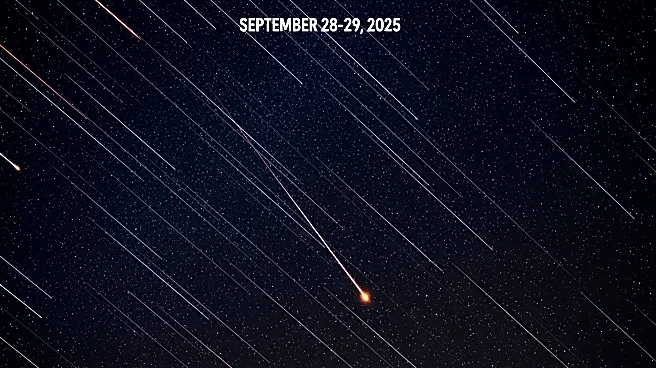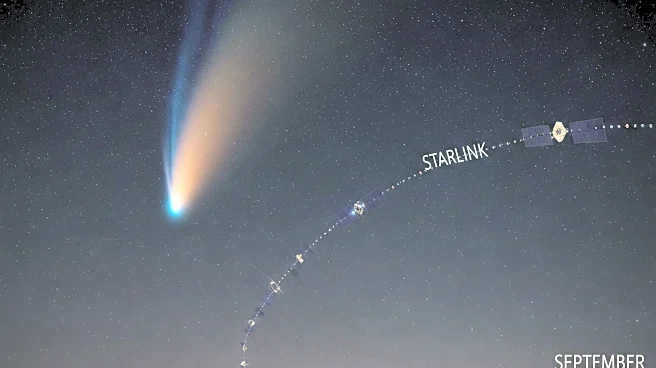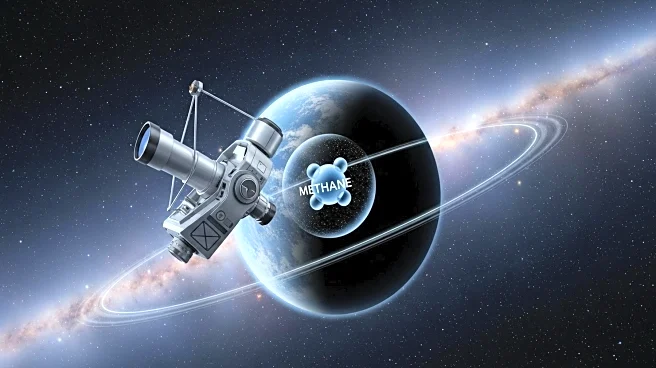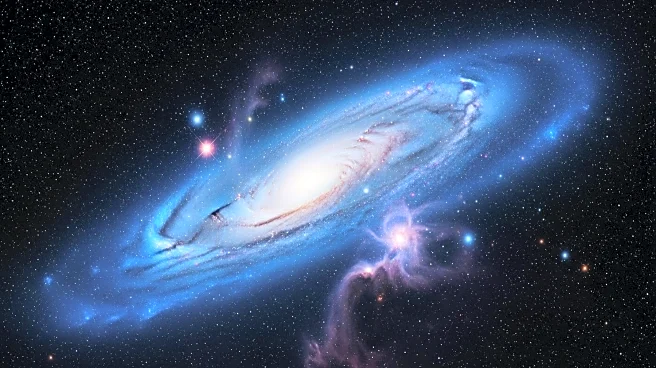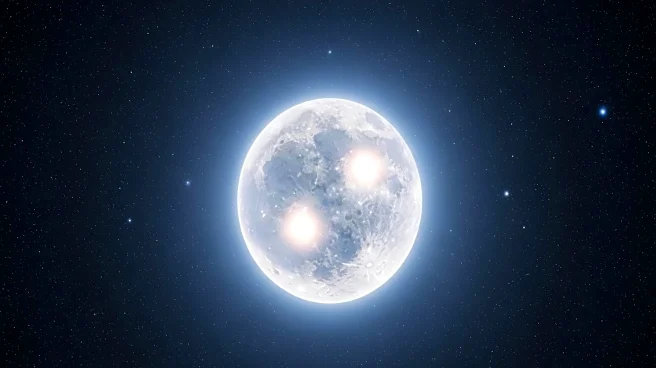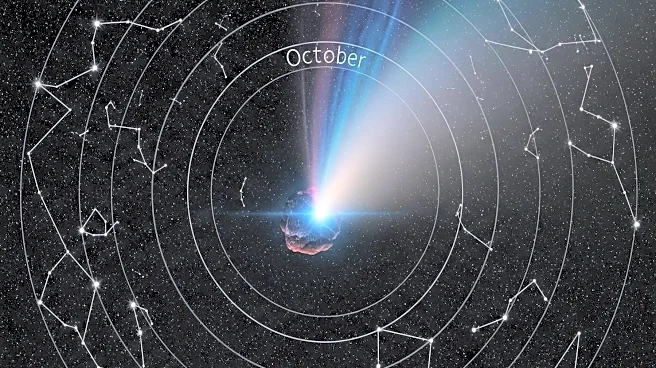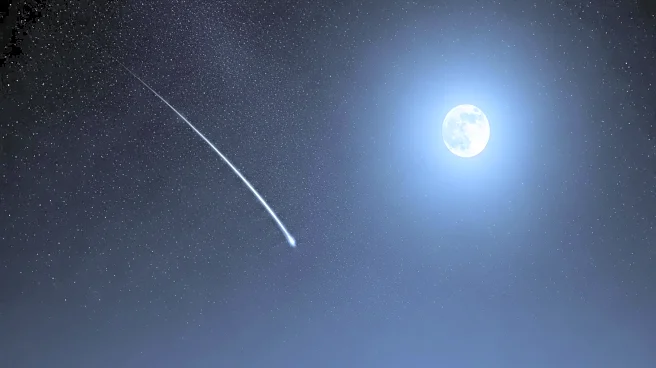What's Happening?
Astronomy enthusiasts in North America are encouraged to observe the Maginus sunrise ray phenomenon occurring on the First Quarter Moon. The event is visible as the Moon, currently in Sagittarius, remains above the horizon until midnight. The Maginus Crater, located in the lunar south, is experiencing sunrise, creating a V-shaped ray of light that spreads across its floor. This occurs as sunlight breaks through the crater's eastern rim, initially spilling through a divot created by a later impact. Observers can watch the ray's progress throughout the evening, as the Sun gradually illuminates the crater floor.
Why It's Important?
The Maginus sunrise ray offers a unique opportunity for amateur astronomers and sky watchers to engage with lunar observations. This event highlights the dynamic nature of celestial bodies and encourages public interest in astronomy. Observing such phenomena can enhance understanding of lunar geography and the effects of sunlight on crater formations. It also serves as an educational experience, fostering appreciation for the complexities of the solar system and inspiring future exploration and study.
What's Next?
Observers are advised to periodically check the Maginus Crater throughout the night to witness the full progression of the sunrise ray. This event may inspire further interest in lunar observation and potentially lead to increased participation in astronomy clubs and educational programs. As the Moon continues its phases, similar opportunities for observation will arise, encouraging ongoing engagement with celestial events.
Beyond the Headlines
The Maginus sunrise ray phenomenon underscores the importance of public engagement with science and astronomy. It highlights the accessibility of astronomical events to the general public, promoting scientific literacy and curiosity. Such events can also stimulate discussions about lunar exploration and the potential for future missions to study the Moon's surface in greater detail.

